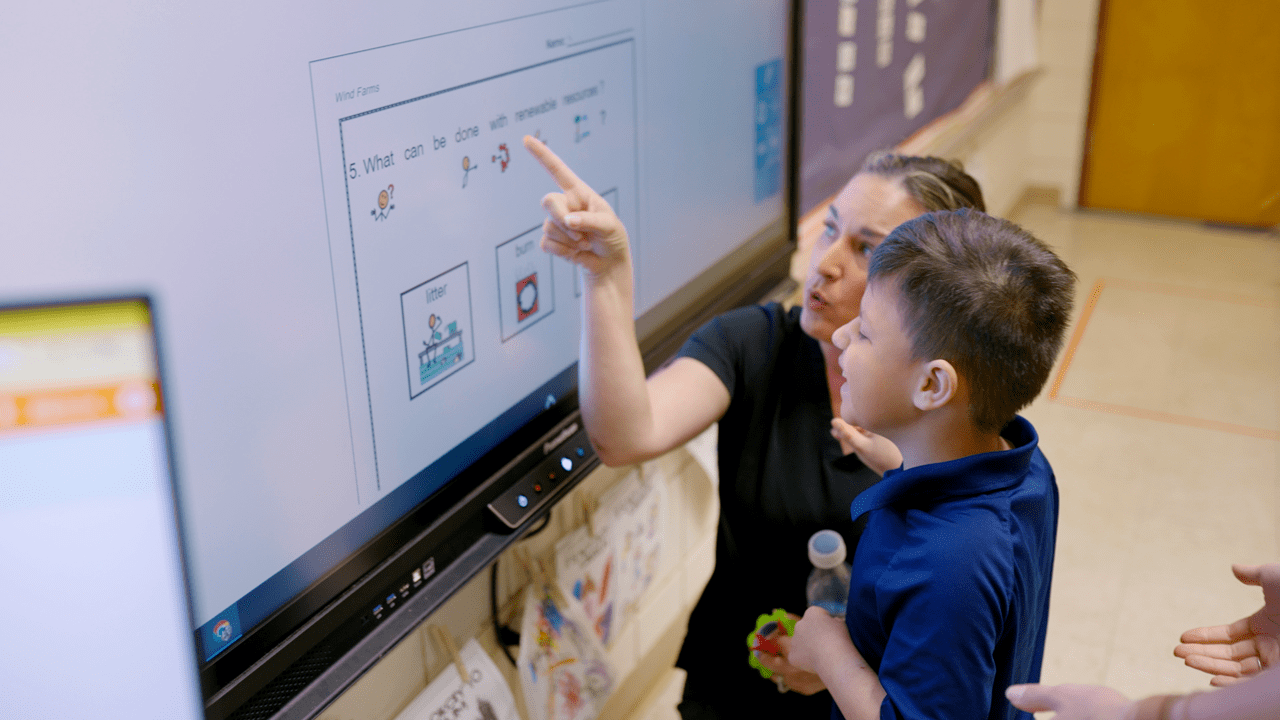Best Practices
Overcoming Barriers
Self-Determination
Adopting a vision of student-led IEPs is a newer practice in the special education world. In recent years, some school districts have piloted programs to help special education departments develop and execute this vision for student-led IEPs. One such program comes from a partnership with the District of Columbia’s Office of the State Superintendent of Education (O.S.S.E.) and Two Rivers Public Charter School in Washington, D.C. This partnership has resulted in several resources to help guide other school teams as they build a culture of student‑led IEPs.
These resources chart the progression of student participation in the IEP process by five levels. Students may start at any developmentally appropriate level, though younger students in early childhood or early elementary almost always start at Level One. Students progress through the levels as they gain experience with IEP participation, self-awareness, and emotional readiness. Regardless of age and ability, students should start at the highest appropriate level and aim to advance to higher levels with increased experience and practice.
Importance of Scaffolded Participation
Scaffolded instruction refers to the process of teaching with supports. (Picture how a building scaffold provides temporary supports to workers or structures during construction.) Scaffolded participation in the student-led IEP process allows students to take one step at a time toward their learning goals, ensuring they are academically and emotionally ready at each stage.
Examples of IEP participation scaffolds:
- Visual cues
- Sentence starters
- Rehearsal
- Pre-recorded statements
Using these supports helps teachers guide students toward self-advocacy at a pace that matches their ability and readiness. The process feels good to students, parents, and teachers—and it works.
On the contrary, if a student is pushed to achieve a learning objective before being academically or emotionally ready, they are more likely to experience frustration, disappointment, and even embarrassment instead of confidence and success. IEP case managers should provide scaffolded supports to students at every level—no matter the age or ability level. Even older students in advanced classes need guidance as they take steps toward lifelong leadership and advocacy skills.
Student-Led IEP Process
Below is a description of the five levels on which a special education team may model its scaffolded participation for the student-led IEP process.
Level one
Level One is the first level of participation and it is centered on the student learning of the IEP process and a broad overview of setting goals. To start, teachers and parents work together to help students learn what an IEP is in a developmentally appropriate way. Try using definitions like “learning plan” or “special plan to help you learn at school” to describe the IEP. Depending on the student, it may also be appropriate to educate the student about the name and nature of their disability. Always check with the student’s parent before approaching this conversation. When talking with students about their disabilities, remember to use language that is clear, concise, and age appropriate.
In Level One, students learn about goal setting and work with their teacher to create a meaningful goal. At this early stage, students’ goals may or may not be directly related to their academic or therapeutic goals on the IEP. The more important objective is to help students gain an understanding of what it means to create a goal and then track their progress as they work toward achievement.
Students in Level One may wish to share their goals with the IEP team. This can happen at the IEP meeting if they are emotionally ready, or they may share their goal in a short video that can be viewed during the IEP meeting. The student might say:
“Hi, my name is Michelle. I have a special learning plan called an IEP. My goal is to read one new book from the red bin every day.”
Level Two
Students in Level Two become more aware of their strengths and challenges as they relate to school. They become better able to answer reflective questions like:
What are you good at?
What is hard for you?
When prompted with multiple choices or sample scenarios, a student in Level Two can identify what types of supports or strategies are helpful. For example, a student with a reading disability may be able to articulate that her teacher’s read-aloud of the text in a small-group or one-to-one setting is very helpful but a read-aloud from an audiobook is less helpful. The IEP team should consider the student’s input when reviewing the accommodations section of the IEP.
Students at Level Two may choose to share their strengths and challenges via video or at the live IEP meeting. If the student attends the meeting, they may be able to respond to questions from the team if they have had a chance to view and practice their response in advance.
Level Three
As students progress to Level Three, they are more ready to learn about the different parts of the IEP. The teacher helping the student prepare for their upcoming IEP meeting may highlight a few of the key sections, such as Goals, Present Levels of Performance, and Supplementary Aids and Services.
With appropriate pre-planning and practice, a student at Level Three can share more detailed information about their goals, possibly reporting updates about progress toward one or more and explaining why the goal is important or necessary. With teacher support, students at Level Three may also discuss in greater detail what kinds of supports are helpful to them in the classroom. This is an excellent opportunity for the student to practice self-advocating for additions or revisions to their IEP.
Level Four
Level Four in the progress of participation describes students who can more clearly explain how a specific IEP goal helps them make progress in their academic or therapeutic content area. They may lead certain parts of the meeting, such as providing an update about progression toward specific goals. Students may also provide input about how they use different testing accommodations. For example, if a student has the flexible scheduling accommodation for testing, they may explain to the team how they use this service during exams:
“I know I do my best work in the morning. I talk with Mr. Hathaway to find a day that works for him to come to his classroom early in the morning before Homeroom starts, and I take my test during that time. I feel I can show what I know using this accommodation.”
Level Five
At Level Five, students take more ownership of the IEP meeting. Students may co-lead and facilitate some or all of the meeting. They give greater input into their present levels of performance. This may mean providing a narrative overview of assessments, sharing work samples, and explaining how they have grown academically, socially, and emotionally. Students may also help write part of the updated present levels of performance statement as well as goals and work with the team to analyze data. For example, if a student did not perform well on a certain standard or did not make progress in one of their goal areas, they may be able to offer some insight into why.
Provide Support and Guidance
While it is exciting to see a student grow in self-advocacy and leadership skills, it is important to remember that even the most emotionally mature, organized, and practiced students will need support and adult guidance during the meeting. Leading an IEP meeting can be challenging for trained adult professionals. Be careful not to put too much pressure on the student.
Students at every level of cognitive and physical ability can take on a leadership role throughout the IEP process. Students with severe cognitive disabilities can and should still participate in an appropriate and meaningful way. Don’t underestimate the power of sharing knowledge with a student about their disability and the options they have as they learn. Leading through observation and passive participation is still a vital skill for students. Showing up is important!
What’s Next?
In the next article, Overcoming Barriers, we’ll look at the common obstacles that school teams face when transitioning to a student-led IEP framework. There are solutions and workarounds to the hurdles that special education leaders and teachers face. Crunched for time? Parents reluctant? Wondering where to start? We’ve got ideas for you.



